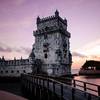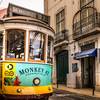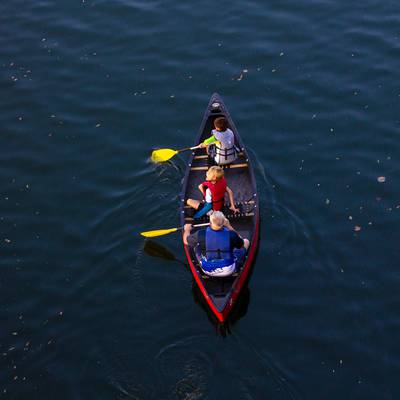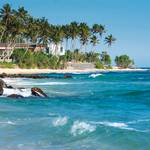General
Transport
People
Accomodation
Food & Drink
Sightseeing
 What to see in Portugal?
What to see in Portugal?
 Are there any festivals in Portugal?
Are there any festivals in Portugal?
 What are the best tours to take in Portugal?
What are the best tours to take in Portugal?
 What are the best beaches in Portugal?
What are the best beaches in Portugal?
 Are Lisbon and Porto city cards worth buying?
Are Lisbon and Porto city cards worth buying?
 What museums in Lisbon offer free entry?
What museums in Lisbon offer free entry?
 What should I know about surfing in Portugal?
What should I know about surfing in Portugal?
Legal
Money
Safety & Health
Family travel

What to do in Portugal?
Take a cruise at Ria de Aveiro. Aveiro is sometimes nicknamed as the Portuguese Venice. If you come to Costa Nova, you cannot miss the Ria de Aveiro and its Moliceiros cruises. These boat cruises provide a complete different perspective on the city. The Moliceiros are definitely the highlight of the city. They were formerly used to cath the seaweed, which is called “moliço” in Portuguese, that was used as fertilizer for the lands of the region. When this activity ended, the boats started being used for touristic activities. During the boat cruises, you get to see many landmarks of the region. So, it is definitely a must!
Take a stroll down the neighborhood of Alfama. It is the oldest and safest neighborhood of Lisbon. There are a lot of narrow alleys, a lot of staircases and dead ends. The structure of the area is very peculiar, unique and one-of-a-kind! But you should know that you don’t need to worry, because despite the fact that there are a lot of narrow lanes going up and down, there’s no way you can really get lost as long as you walk down Alfama. If you keep walking down the neighborhood from the Castelo São Jorge, you will get out at the bottom.
Marvel at the Oceanario de Lisboa. The oceanarium in Lisbon is one of the best places to come in the city if you are travelling with children and it is dedicated to educating the public on marine conservation. The aquarium is full of a variety of creatures and you will find four separate ecosystems that are divided geographically to represent the Antarctic, Atlantic, Pacific, and Indian oceans. Just some of the critters you will find here include sharks, rays, sea otters, and penguins.
Go canoeing at Furnas Lake. One of the top spots in Azores is Furnas Lake which is a Crater Lake known for its blue waters tinged with green that sits of hills covered in mud volcanoes and hot springs. If you like brooding volcanic landscapes, then this is not to be missed and you can go hiking past the calderas or take to the waters and go canoeing which allows you to get up close to the amazing multi-hued waters.
Marvel at the collections in the Museu Calouste Gulbenkian. One of the most famous museums in Lisbon is the Museu Calouste Gulbenkian which has 6,000 artifacts that used to belong to Calouste Sarkis Gulbenkian who was an Armenian national living in Portugal who donated his art collection to the museum before he died. As a result, you can expect to find an incredible collection that will take you back 4,000 years and spans all kinds of pieces such as Oriental, Classical, and European art. Some notable pieces include Roman medallions, paintings by Rembrandt and Turner, and furniture that would have belonged to Louis XV and XVI.
Take a train across the 25th of April Bridge. This large suspension bridge is one of the most recognizable sights in Lisbon and offers you the best views of the city. Unlike some other suspension bridges there is no pedestrian walkway here but you can drive or take a train across and enjoy the River Tagus that sprawls beneath you. The bridge also has the claim to fame of having the biggest span in all of Europe, so this is a pretty special spot to visit if you are in Lisbon.
Experience the Igreja de Santo Antonio and the Museu Municipal. The Municipal Museum in Lagos is full of archaeological pieces from the Algarve region of Portugal and a range of cultural memorabilia such as arts and crafts pieces and even a model of an Algarve village so that you can imagine how things would have looked in the days of old. Make sure to check out the Opus Vermiculatum Roman Mosaic and the Igreja de Santo Antonio which is filled with gilt decorations.
Walk along Cabo da Roca. The Cabo da Roca is one of the most famous coastal trails in all of Europe and sits in the west of Portugal. It is part of the wider Sintra Cascais Natural Park and is known for its pretty scenery that takes you along the Atlantic Coast so that you pass beaches, rugged cliffs, and an elegant lighthouse along the way. Another reason to walk along the trail is to enjoy the flora and fauna that you will find along the way and keen bird watchers will notice a huge section of bird life here to admire.
Walk the streets of Cais da Ribeira. It’s a charming picturesque district in Porto, sometimes referred to as “the soul of Porto.” It’s made up of medieval streets that end on a square by the Douro River. Medieval buildings are filled with bars, cafes and restaurants, making Ribeira a popular place for eating and drinking. Ribeira is especially popular on feast days when townspeople flock there to see fireworks.

What alcoholic drinks to try while in Portugal?

Am I expected to tip in Portugal?

What type of adapter do I need for the outlets?

What can I bring home from Portugal?

What should I know about surfing in Portugal?
